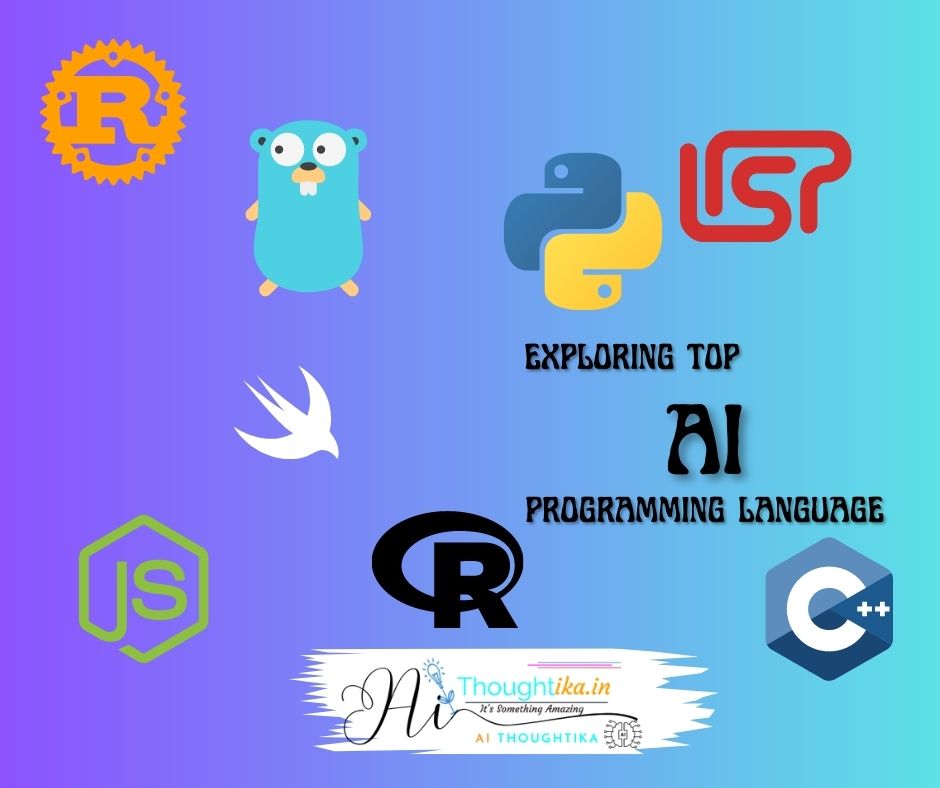Machine learning is a branch of computer science that enables computers to learn without explicitly programming them. Machine learning algorithms are used to analyse data and generate predictions or judgements.
Machine learning algorithms come in a wide variety, each with unique advantages and disadvantages. Among the most common machine learning algorithms are:
- The linear regression algorithm : is used to forecast continuous data like sales figures or home prices.
- Logistic regression : This algorithm is used to predict binary outcomes, such as whether a buyer would click on an ad or not.
- Decision trees: This method is used to build models that forecast outcomes in accordance with a set of rules.
- Support vector machines (SVMs) are an algorithm for categorising data into two or more groups.
- Neural networks are a more sophisticated machine learning algorithm that take their inspiration from the human brain.
The choice of which machine learning algorithm to use depends on the specific problem that you are trying to solve. For example, if you are trying to predict continuous values, then linear regression is a good option. If you are trying to predict binary outcomes, then logistic regression is a good option.
Here is a more detailed overview of some of the most common machine learning algorithms:
Linear regression
Linear regression is a simple but powerful machine learning algorithm that can be used to predict continuous values. The basic idea behind linear regression is to find a line that best fits the data. This line can then be used to predict new values.
The relationship between a dependent variable and one or more independent variables can be modelled statistically using linear regression. The relationship between the variables is assumed to be linear, which means that changes in the dependent variable will affect the independent variables immediately.
Finding the best-fit line that minimises the discrepancies between the observed data points and the line’s anticipated values is the aim of linear regression. The slope and intercept coefficients, which define this line, are estimated.
Once the line has been drawn, it can be used to create predictions or analyse how the variables relate to one another. The intercept of the line indicates the value of the dependent variable when the independent variable is zero, while the slope of the line shows the rate of change in the dependent variable for a unit change in the independent variable.
To analyse and forecast trends, comprehend the relationships between variables, and create forecasts based on past data, linear regression is frequently utilised in a variety of industries. It is a fundamental statistical analysis technique that serves as the basis for more intricate regression models.
Logistic Regression
Logistic regression is a type of regression that is used to predict binary outcomes. For example, you could use logistic regression to predict whether a customer will click on an ad or not. The basic idea behind logistic regression is to find a line that best separates the two classes of data.
When the dependent variable is categorical or binary (e.g., yes/no, true/false), logistic regression is a statistical technique used to describe the relationship between the dependent variable and one or more independent variables.
Logistic regression forecasts the likelihood of an event happening as opposed to linear regression, which predicts continuous values. It converts the output into a number between 0 and 1, which represents the likelihood of the event, using a logistic function, often known as a sigmoid function.
The logistic regression model calculates coefficients that show how the independent variables affect an event’s likelihood. These coefficients show the probability’s log-odds or logit.
Logistic regression adds a threshold to the expected probability before making predictions. It is put into one group if the anticipated probability is greater than the threshold; if not, it is put into the other category.
For tasks like binary categorization, risk prediction, and comprehending the impact of factors on categorical outcomes, logistic regression is frequently utilised in a variety of industries, including healthcare, finance, and the social sciences. It is a fundamental machine learning technique that is frequently used as a building block for more intricate models.
Decision Trees
Decision trees are a popular machine learning algorithm used for both classification and regression tasks. They have a tree-like structure, with each internal node representing a feature or attribute, each branch representing a decision based on that feature, and each leaf node representing a predicted outcome or class label.
The goal of a decision tree is to create a model that can make predictions or decisions based on the features of the input data by following a series of binary splits. The features that best separate the data into homogeneous groups with respect to the target variable are used to select the splits.
Support vector machines (SVMs):
SVMs are a powerful machine learning algorithm that can be used for both classification and regression tasks. SVMs seek an optimal hyperplane that divides data points into distinct classes or predicts continuous values.
An SVM in binary classification seeks the best hyperplane that maximises the margin, which is the distance between the hyperplane and the closest data points from each class. These data points are referred to as support vectors. SVMs aim to achieve a robust and generalised model by maximising the margin.
SVMs use a technique known as kernel trick if the data is not linearly separable. The kernel trick transforms the input data into a higher-dimensional feature space, from which it may be linearly separable. Kernel functions that are commonly used include linear, polynomial, radial basis function (RBF), and sigmoid.
SVMs predict new data points by assigning them to a class based on which side of the hyperplane they fall on. Data points on one side of the hyperplane are classified as belonging to one class, while data points on the other side are classified as belonging to the other class.
SVMs have several advantages, including the ability to handle high-dimensional data, non-linear relationships via kernel functions, and working well with a small number of training samples. In addition, they are less prone to overfitting than other algorithms. SVMs, on the other hand, can be computationally demanding and necessitate careful tuning of hyperparameters.
SVMs are used in a variety of fields, including text classification, image classification, bioinformatics, and finance. They are especially useful when dealing with complex decision boundaries and datasets with distinct class boundaries.
Neural networks
Neural networks are a type of machine learning algorithm that is inspired by the structure and behaviour of biological neurons in the human brain. They are a key component of deep learning, which is a subfield of machine learning.
Neural networks are made up of interconnected layers of artificial neurons known as nodes or units. Each node receives input signals, performs a mathematical operation on them, and outputs a signal. The weights assigned to the connections between nodes determine the strength of the signal transmission.
A neural network’s layers are typically organised as follows: an input layer, one or more hidden layers, and an output layer. The initial data is received by the input layer, and the final predictions or outputs are produced by the output layer. The hidden layers are in charge of transforming and processing the input data through a series of mathematical computations.
The neural network adjusts the weights of the connections during the training phase based on a chosen optimisation algorithm and a defined loss function. The goal is to reduce the difference between predicted and true values in the training data. Backpropagation is the process by which the error is propagated backwards through the network, allowing the weights to be updated accordingly.
Once trained, neural networks can make predictions on previously unseen data. The input data is fed into the network, where it travels through the layers to produce the final output.
Because of their ability to learn complex patterns and relationships in data, neural networks have received a lot of attention, allowing them to excel at tasks like image and speech recognition, natural language processing, and recommendation systems. They do, however, frequently necessitate a large amount of data and computational resources for training, and their black-box nature makes them less interpretable than other algorithms.
Machine learning algorithms are a powerful tool for solving a wide range of problems. Understanding the various types of machine learning algorithms allows you to select the best algorithm for your specific problem.
References:
- Machine Learning Algorithms
- A Tour of Machine Learning Algorithms
- Essential Machine Learning Algorithms: Top 10 to Master in 2023
- 10 Machine Learning Algorithms to Know





1 thought on “Machine Learning Algorithms: A Comprehensive Guide”